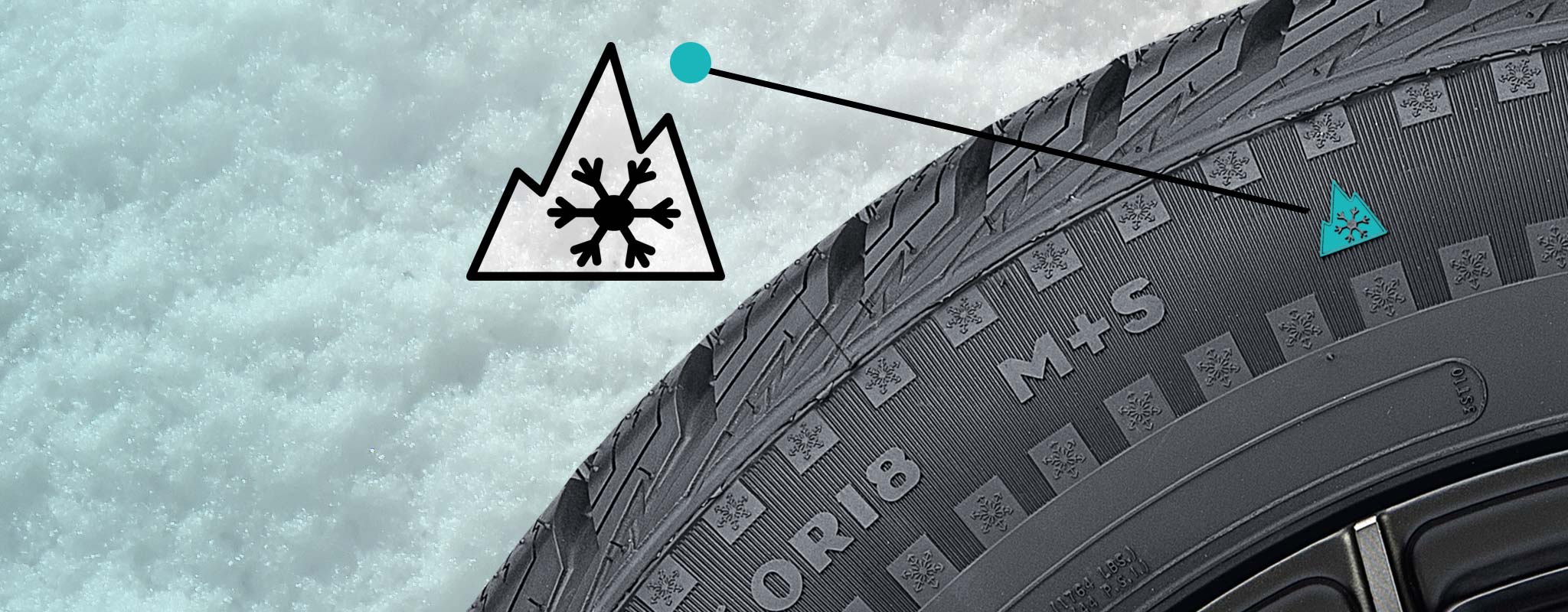With the snowy season just around the corner, it’s time to start preparing your vehicle for the winter season and this means it’s time to change your tires to a winter tire for enhanced snow and cold weather performance.
In order to help you prepare for the switch over, we decided to put together some crucial facts.

1. WINTER TIRES ARE MANDATORY IN SOME PROVINCES
Winter tires remain the safest way to drive in the Canadian winter, though they aren’t always mandatory. The rules and regulations surrounding winter tires vary provincially.
- British Columbia: In certain parts of BC, particularly mountainous areas, winter tires or chains are required by law between October 1 and April 30. Usually, areas that tires are mandatory have signposts.
- Manitoba and Ontario: Studded tires may be used between October 1 and April 30.
- Alberta, Saskatchewan, Northwest Territories, Yukon and Nunavut: Despite the sheer amount of snow these provinces receive every year, there are currently no regulations when it comes to winter tires.
- Quebec: Throughout the province of Quebec it has been the law since 2008 that all drivers must have four winter tires installed on their vehicle between December 15 and March 15. These tires must be marked with the peaked mountain and snowflake symbol showing that the tires are certified to meet snow traction performance requirements. You may also have studded tires in place from October 15 to May 1. If you’re caught driving without them, you could face a fine of $200 to $300.
- New Brunswick: The only vehicles that must have winter tires in New Brunswick are school buses. However, if you still want to be safe, studded tires are allowed between October 15 to May 1.
- Nova Scotia: Studded tires are allowed between October 15 and May 1 but there are some guidelines around the type of studs you can use. Studs may be no longer than ¼ inch from the base of the tire or have a diameter of over a ½ inch. Vehicles under 10,000lbs can have up to 130 studs in total.
- Prince Edward Island: There are no laws surrounding winter tires in PEI, however, they are recommended. Studded tires are permitted between October 1 and May 31.
- Newfoundland: Winter tires are strongly recommended though not legally required. They may be used between November 1 and May 31.
- WINTER TIRES AREN’T JUST FOR THE SNOW
One mistake people often make about winter tires is that they are solely for snow. Some people then argue that if their province doesn’t get much snow, they don’t need to get winter tires. This is wrong. Changing over to winter tires is simply part of vehicle maintenance and upkeep. All-season tires struggle with the lower temperatures, so even if there is little snowfall, if the thermometer drops below 7°C, you risk losing your grip on the road. Snow tires are made to handle these cold conditions, with better grip on cold, hard surfaces.
- 7°C IS THE MAGIC NUMBER
Speaking of 7°C, it really is the magic temperature. Once the weather starts hovering around 7°C, you should start thinking about getting those winter tires in place. Once the summer vibes vanish and you’re faced with that breezy fall chill, you can bet winter is on its way. Getting winter tires on before the worst of the season’s weather hits ensures that you won’t be faced with a long queues or even worse, all the tires being sold out. Tire companies make a limited supply, so if you’re too late you’ll miss the opportunity.
- USE IDENTICAL TIRES FOR ALL 4 WHEELS
It’s important that you put winter tires on all four wheels, and additionally, you make sure that all four are the same type of wheel. If you use wheels of varying grip, the ones with less grip could slip and you could lose control. Transport Canada similarly backs up this sentiment, adding that all wheels should be the same size and make, as well as having the same tread and equal wear.